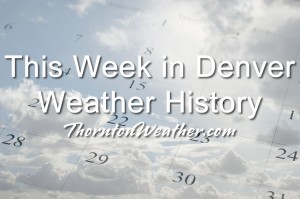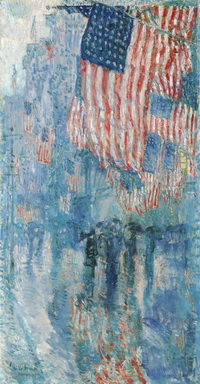
Heavy snow and damaging wind are at the forefront of our look back at this week in Denver weather history.
From the National Weather Service:
2-17
In 1939…more than 2 weeks of unseasonably warm weather made the month the 3rd warmest on record. Seven daily temperature records were set…including the all-time record high temperature for the month of 79 degrees on the 5th. Daytime highs were balmy with 14 days in the 60’s and 70’s. Low temperatures dipped to freezing or below on only 5 days. The period was dry with only a trace of snow on the 12th.
3-15
In 1972…a protracted cold spell held an icy grip on metro Denver when maximum temperatures never reached above freezing for 10 consecutive days from the 3rd through the 12th and minimum temperatures dipped below zero on eleven consecutive days from the 5th through the 15th. Daily low temperature records were set with 15 degrees below zero on the 5th…17 degrees below zero on the 6th… And 18 degrees below zero on the 10th. Daily record low maximum readings were set with 3 degrees on the 6th and 6 degrees on the 9th. The very cold temperatures were caused by 3 to 5 inches of snow cover and a Canadian air mass.
7-9
In 1919…an apparent arctic cold front brought extreme cold and light snow to the city. Snowfall totaled only 2.5 inches on the 7th and 8th. Temperatures dipped to lows of 14 degrees below zero on the 8th and to 20 degrees below zero on the 9th. Both readings were daily record minimums. High temperatures were only 4 degrees on the 8th and 7 degrees on the 9th.
In 1923…a major storm dumped 13.5 inches of snowfall on downtown Denver. The apparent post-frontal snowfall started during the late afternoon of the 7th and continued through the evening of the 9th. Temperatures dipped from a high of 66 degrees on the 7th with west winds sustained to 35 mph to a low of only 14 degrees on the 9th…with north winds sustained to 25 mph.
8-9
In 1943…4.5 inches of snow fell in downtown Denver. This was the only measurable snow of the month. North winds were sustained to 26 mph on the 8th.
In 2003…snowfall totaled 3 to 6 inches across metro Denver. Snowfall was heavier in and near the foothills with 8.0 inches measured in Boulder and 10 miles southwest of Sedalia. Snowfall was 3.9 inches at the site of the former Stapleton International Airport. Most of the snow fell on the 8th…as the snow ended shortly after midnight. North winds gusted to 29 mph at Denver International Airport.
In 2008…an upslope snowstorm produced heavy snow in and near the foothills of Boulder…Jefferson and Douglas counties… And along the palmer divide south of Denver. Storm totals in the foothills ranged from 8 to 15 inches. In Boulder and in areas west and south of Denver…storm totals ranged from 6 to 13 inches. The snowfall measurement at Denver International Airport was 3.9 inches.
Continue reading December 9 to December 15: This Week in Denver Weather History


